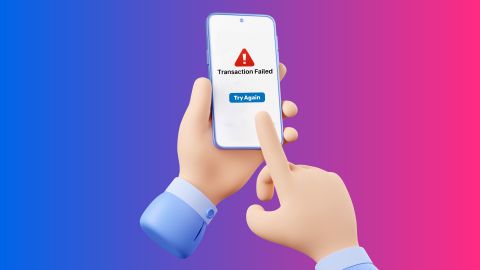Non-renewable energy utilises the rise and fall of ocean tides to produce electricity. This renewable energy source is reliable and environmentally friendly, aiding in carbon reduction efforts.
What is Non-renewable Energy?
-
-
Non-renewable energy is derived from resources that exist in finite quantities and cannot be replaced once consumed. These energy sources include fossil fuels such as coal, oil, and natural gas, as well as nuclear energy from uranium. The extraction and use of non-renewable energy have been critical in powering industries and homes but pose significant environmental challenges.
How non-renewable energy generates electricity
Non-renewable energy generates electricity primarily through heat and mechanical energy:- Fossil fuels (Coal, oil, natural gas): When burned, these fuels release heat, which turns water into steam. The steam drives turbines connected to generators, producing electricity.
- Nuclear energy: In nuclear power plants, uranium undergoes fission, releasing heat that is used to produce steam. This steam also drives turbines to generate electricity.
Know more about non-renewable energy
Understanding non-renewable energy helps us make informed decisions about our energy consumption.- Fossil fuels: Coal, oil, and natural gas are the primary non-renewable resources.
- Nuclear energy: Generated through nuclear fission using uranium.
- Finite resources: Once depleted, these resources cannot be replenished.
Types of non-renewable energy sources
Non-renewable energy sources are finite resources that cannot be replenished on a human timescale. The main types include:- Coal: A fossil fuel formed from plant remains over millions of years, used primarily in power generation.
- Oil (Petroleum): Extracted from underground reserves, primarily used for transportation and industry.
- Natural gas: A cleaner fossil fuel compared to coal and oil, used for heating, electricity generation, and industrial applications.
- Nuclear energy: Produced through nuclear fission of uranium or plutonium, generating significant amounts of energy.
Non-renewable energy generation
Non-renewable energy generation refers to the process of producing electricity by burning fossil fuels or using nuclear reactions. It is the dominant method of power generation globally, but its environmental impacts, such as greenhouse gas emissions and waste management issues, have led to increasing concerns about sustainability. Coal, natural gas, and oil are the main fossil fuels used, while nuclear energy involves splitting atomic nuclei to release energy. Power plants using these resources are typically large-scale facilities with significant infrastructure to convert thermal energy into electrical energy.
Benefits of non-renewable energy solutions- High energy density: Non-renewable energy sources provide a high output of energy per unit, making them reliable for large-scale electricity generation.
- Infrastructure availability: A well-established global infrastructure for extraction, transportation, and power generation makes non-renewable energy easy to access.
- Reliability: Unlike renewable sources, non-renewable energy can be generated continuously, providing a stable and reliable power supply.
- Cost-effectiveness: Non-renewable energy tends to be less expensive to produce and use, especially in areas with abundant fossil fuel resources.
Uses of non-renewable energy
Non-renewable energy is used in various sectors:- Electricity generation: Power plants burn fossil fuels or use nuclear reactions to produce electricity for homes, businesses, and industries.
- Transportation: Petroleum products, such as gasoline and diesel, power vehicles like cars, trucks, and airplanes.
- Industry: Non-renewable energy is crucial for manufacturing, processing raw materials, and running heavy machinery.
- Heating: Natural gas is commonly used in residential and commercial heating systems.
Importance of electricity payment online
Paying your electricity bill online offers several benefits:- Convenience: Pay anytime from anywhere without visiting physical locations.
- Time-saving: Reduces waiting times associated with traditional payment methods.
- Secure transactions: Online platforms provide secure payment gateways ensuring customer data protection.
- Immediate confirmation: Users receive instant confirmation of payment, reducing billing disputes.
Conclusion
Non-renewable energy sources have been vital in driving modern industrial societies and meeting global energy demands. While they offer reliable, high-output energy, they also come with environmental and sustainability concerns, such as greenhouse gas emissions and resource depletion. As technology advances, there is increasing focus on transitioning to renewable energy sources to mitigate climate change while maintaining a stable energy supply. Despite the shift toward renewables, non-renewable energy will continue to play a significant role in the global energy landscape for the foreseeable future.
-
Recharge and Pay Bills
Mobile Prepaid
Mobile Postpaid
Broadband Bill Payment
Electricity Bill Payment
Bajaj Finserv App for All Your Financial Needs and Goals
Trusted by 50 million+ customers in India, Bajaj Finserv App is a one-stop solution for all your financial needs and goals.
You can use the Bajaj Finserv App to:
Apply for loans online, such as Instant Personal Loan, Home Loan, Business Loan, Gold Loan, and more.
Explore and apply for co-branded credit cards online.
Invest in fixed deposits and mutual funds on the app.
Choose from multiple insurance for your health, motor and even pocket insurance, from various insurance providers.
Pay and manage your bills and recharges using the BBPS platform. Use Bajaj Pay and Bajaj Wallet for quick and simple money transfers and transactions.
Apply for Insta EMI Card and get a pre-approved limit on the app. Explore over 1 million products on the app that can be purchased from a partner store on Easy EMIs.
Shop from over 100+ brand partners that offer a diverse range of products and services.
Use specialised tools like EMI calculators, SIP Calculators
Check your credit score, download loan statements and even get quick customer support—all on the app.
Download the Bajaj Finserv App today and experience the convenience of managing your finances on one app.
You can use the Bajaj Finserv App to:
Apply for loans online, such as Instant Personal Loan, Home Loan, Business Loan, Gold Loan, and more.
Explore and apply for co-branded credit cards online.
Invest in fixed deposits and mutual funds on the app.
Choose from multiple insurance for your health, motor and even pocket insurance, from various insurance providers.
Pay and manage your bills and recharges using the BBPS platform. Use Bajaj Pay and Bajaj Wallet for quick and simple money transfers and transactions.
Apply for Insta EMI Card and get a pre-approved limit on the app. Explore over 1 million products on the app that can be purchased from a partner store on Easy EMIs.
Shop from over 100+ brand partners that offer a diverse range of products and services.
Use specialised tools like EMI calculators, SIP Calculators
Check your credit score, download loan statements and even get quick customer support—all on the app.
Download the Bajaj Finserv App today and experience the convenience of managing your finances on one app.
Frequently asked questions
How does non-renewable energy work?
Non-renewable energy sources work primarily by converting stored chemical or nuclear energy into usable electricity or heat. Fossil fuels such as coal, oil, and natural gas are burned in power plants to produce heat. This heat is used to convert water into steam, which drives turbines connected to generators, producing electricity. In nuclear power plants, the process is different; uranium or other radioactive materials undergo nuclear fission, releasing vast amounts of energy in the form of heat, which similarly turns water into steam to drive turbines. These processes are highly efficient but produce environmental concerns due to the release of pollutants or radioactive waste.
What are the main challenges of non-renewable energy?
The main challenges of non-renewable energy include environmental degradation, resource depletion, and greenhouse gas emissions. Fossil fuel extraction and combustion contribute to air and water pollution, as well as global warming through the release of carbon dioxide. The finite nature of these resources means they will eventually be exhausted, leading to rising costs and potential energy shortages. Additionally, nuclear energy poses significant risks in terms of safety and radioactive waste management, creating long-term environmental and health concerns. These challenges have spurred the development of cleaner, more sustainable energy alternatives.
What technologies are used in non-renewable energy?
Non-renewable energy technologies primarily involve processes for extracting, converting, and managing fossil fuels and nuclear materials. For fossil fuels, technologies like coal combustion, gas turbines, and steam turbines are used in power plants to convert heat into electricity. In natural gas plants, combined cycle gas turbine technology improves efficiency by using both gas and steam turbines. Oil is mainly used in internal combustion engines for transportation. Nuclear energy relies on reactors that utilize nuclear fission to release energy. Additionally, carbon capture and storage (CCS) technology is being developed to reduce carbon emissions from fossil fuel power plants.
What are the main sources of energy?
Energy sources are categorized based on their origin and availability. They can be derived from various natural processes, including sunlight, chemical reactions, and mechanical forces. Sources commonly include coal, oil, natural gas, wind, solar, and nuclear power. Each type serves distinct purposes, from generating electricity to powering vehicles and industries.
Why is energy efficiency important?
Energy efficiency refers to using less energy to perform the same tasks or produce the same output. It is crucial because it helps reduce costs, minimizes resource depletion, and lowers environmental impacts like air pollution. Improved efficiency in homes, industries, and transportation also supports sustainable development and reduces the strain on existing energy infrastructure.
Show More
Show Less




